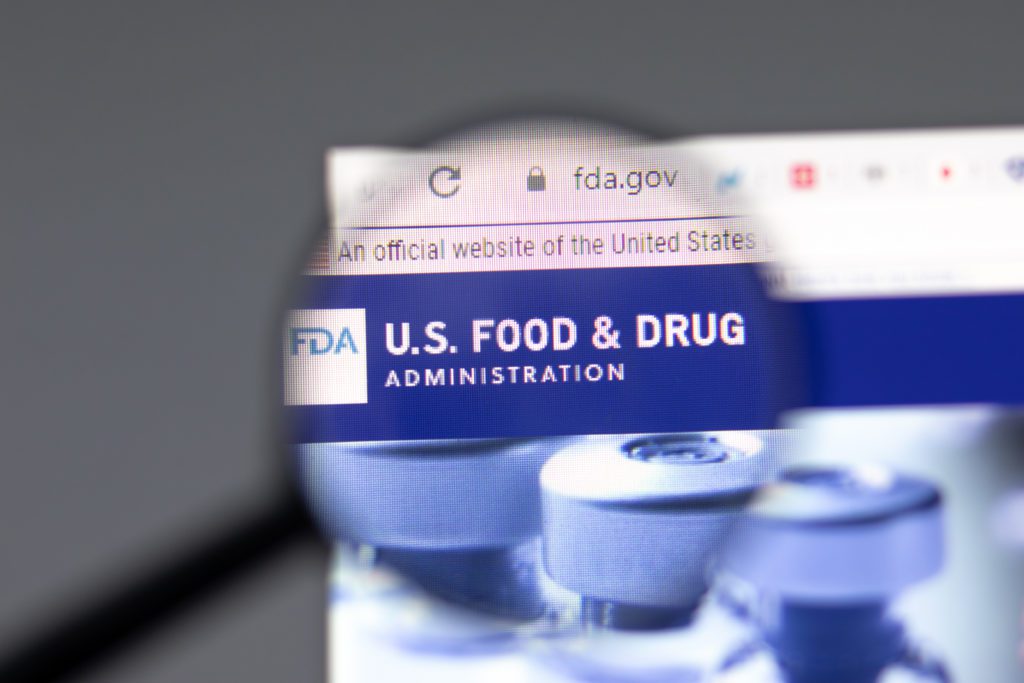Regulators often run a campaign of hypocrisy when confronting vaping.
By George Gay
“However, it is vital that we do not sit and wait for this data [on the long-term health impacts of using nicotine-containing products] and action is taken now to prevent any potential harms caused by vapes.”
“However, it is crucial that any proposed regulations [on vaping] are based on robust evidence, ensuring they are effective as possible, and implemented without delay.”
You could be forgiven for assuming that these two quotes have been taken from statements by people or organizations on different sides of the vaping debate because, on the one hand, it is said to be “vital” that action must predate the collection of data while, on the other hand, it is said to be “crucial” that the collection of data must predate action. But you would be wrong.
The first is from the final paragraph of the Executive Summary of the August-published report from the British Medical Association (BMA: the trade union and professional body for doctors and medical students in the U.K.) titled Taking Your Breath Away: Why We Need Stronger Regulation of Vapes. The second is taken from the final paragraph of the full report.
Would I be rude in suggesting that the BMA authors might be suffering from cognitive dissonance and that they should try healing themselves before handing out advice willy-nilly? After all, the authors, if not doctors themselves, are representatives of the U.K.’s doctors, people whose opinions those of us of the outer dark tend to accept without question in respect of matters of health.
And this level of trust, I think, is perfectly reasonable when it comes to face-to-face consultations involving doctors and individual patients. But once doctors become involved in wider concerns, I think it is necessary to take a more jaundiced view of what they have to say.
Once doctors stop seeing people as individuals and view them only as groups marking points on a graph, they lose that which makes them special, as when they pay more attention to your “body mass index” than to your body. At a populations level, their pronouncements are little more than opinions based not on their medical knowledge but, as in the case of the rest of us, largely on ideologies and prejudices. They become part of the “tyranny of experts.”
In other words, it is important to keep in mind that once doctors step outside the surgery, they can be just as irrational as you or me—or you at least; let’s keep me out of this. Indeed, some time ago, I was at an event where, at the end of the evening, a person who I knew to be a senior medical doctor was doing the rounds, pouring any remaining wine from the bottles on the tables into his glass and drinking it. The event had attracted a wide range of people, from those in their early 20s to those in their 80s, and even a few teenagers.
Sitting at a table watching this person, I started to wonder about him. Was he, for instance, an alcoholic or somebody who usually drank in moderation but was on this occasion letting his hair down? Did he understand, care, or was he too far gone to think about the example he was setting to the younger people present?
Surely, I thought, he must be aware that any level of alcohol consumption creates health risks. Was he a hypocrite who would have been offended if I had smoked or vaped in front of the young people; was he dimmer than his qualifications would have me believe; or was he as heavily into cognitive dissonance as he seemed to be into drinking?
I often think of this occasion when I read of medical professionals making pronouncements on smoking and vaping (but rarely on drinking). And I thought of it again when I read the BMA report, which should have been called the “however” report. You might have noticed that the two report quotes with which I started this piece both opened with the word “however.”
Basically, the report could be summed up as one that reluctantly admits the important role that vapes can play in helping smokers quit their habit but then de facto goes on to say, “however,” we don’t like these products and therefore we are calling for them to be debased by regulation to the point where they will not appeal to anybody and smokers will return to smoking. After all, you know where you are with smoking because people have been doing it for a long time.
The word “however” appears 16 times in the BMA report, whose text takes up only 12 pages. How many times have we seen doctors and researchers put their names to such “however” reports? Reports that purportedly aim at striking a balance between the need to keep vapes appealing enough to smokers so that they are encouraged to give up smoking while not appealing to young people but that, “however,” always come down in support of protecting from themselves a few misbehaving students from well-off families at the expense of trying to help financially impoverished smokers?
Reports that complain about how smoking is the major cause of premature death worldwide but wind up unable to support the use of the one product that has come along that could make a real dent in the toll caused by smoking because the authors are ideologically opposed to people enjoying using nicotine.
The authors of such reports like to sex them up by talking of an “epidemic” of vaping that is in part harming “children.” You can imagine them wringing their hands in anguish at what is happening to these middle-class, mischievous students while ignoring the fact that hundreds of thousands of children from financially impoverished families live in poverty, meaning they are undernourished, with all the negative impacts on their life chances that that entails.
On Dec. 22, just three days before the major feast of Christmas, The Guardian newspaper led with a story titled “Revealed: huge rise in hospital admissions with malnutrition” while on page six it ran with “‘Heartbreaking’: Teachers tell of children with bowed legs and no winter coat.” The latter story, by Jessica Murray, quoted a headteacher as saying some children at her school had bowed legs because they were so deficient in vitamins.
“We’ve had children so malnourished they’ve had heart murmurs,” the headteacher said. “It’s heartbreaking. It’s not how it should be. It’s the worst I’ve ever seen it. We’ve got two-year-olds coming in and trying to eat sand because they’re so hungry.”
As the lead story pointed out, such deficiencies can interfere with brain and bone development and cause health problems in later life. But, despite this, there has been little follow-up of these issues since then, with space being given over rather to numerous negative stories about vaping.
The BMA reports on health problems visited on children by vaping but set against the damage caused by malnutrition (or any number of other causes, such as ketamine addiction), these problems are minuscule. “The NHS revealed that in 2023, 50 children were admitted to hospital with vaping-related disorders,” the report states “The U.K. has a population of more than 12 million children defined as those 0 years old to 17 years old, so 50 represents 0.0004 percent].
“This is up from just 11 children three years previously, demonstrating the significant growth in prevalence of vaping in this age group. Vaping-related disorders can range from lung damage to worsening asthma symptoms, which include wheezing, coughing and chest tightness.”
These numbers are tiny, and, in any case, I wonder if even they can be put down to vaping in the way that malnutrition can be put down to vitamin deficiencies. After all, we are not told how many of the children said to be suffering from the effects of vaping live in our highly polluted cities and/or in the many houses afflicted with damp and mold that are inhabited by impoverished families, but perhaps the doctors assumed that vaping children would live in comfortable houses in leafy suburbs.
In any case, I don’t wish to sound cynical, but aren’t children suffering from asthma rather asking for trouble if they vape? After all, children who are intolerant or allergic to certain foods are taught to avoid them. We don’t seek to regulate such foods so they become unpalatable to children and adults alike.
Why is there so much emphasis on children vaping but so little on their going hungry? There are a number of reasons, but, in my opinion, the main one has to do with the fact that coming down on vapers and smokers allows those involved to do some virtue signaling at little or no cost whereas making sure that children are properly fed needs an effort by those responsible that comes with a price tag that most are not willing to pay.
In fact, the BMA’s report came out at a rather bad time in respect of its attitude to at least some children. The day after publication, The Guardian newspaper ran a story under the heading “BMA accused of witch hunt after transgender care leak.”
The piece, by health policy editor Denis Campbell, described how the BMA had been heavily criticized by key medical figures since it voted on July 17 for, in effect, rejecting a report by Hilary Cass on transgender care, which put it in the position of being the only medical organization in the U.K. not to accept, and to find fault with, her findings, findings that were accepted by the previous right-of-center government and its left-of-center successor.
Campbell wrote that the Academy of Medical Royal Colleges, which represents all U.K. doctors professionally, had criticized the BMA’s refusal to accept “the validity of the evidence and consequently the findings of the independent Cass review of gender identity services for children and young people.”
And ignoring the rule that when in a hole, the best idea is to stop digging, the BMA allegedly undertook a “witch hunt” to try to identify which senior figure leaked that it was set to oppose the Cass review. According to Campbell, critics described the BMA’s action in this regard as “disgraceful” and “Orwellian.”
None of this will make the slightest difference, of course. Nor will the fact that, in my opinion, the BMA report is largely a rehash of stuff that has gone before many times over because the likelihood is that the government, like the general media, will merely read and relay the recommendations, not the thinking or lack of thinking behind them. They will probably not notice that though the report’s 99 references suggest a scientific accountability, in places it reads more like an essay in that it throws out unreferenced and vague statements such as “there are concerns that,” “there is no doubt,” “many health organizations” and “can also influence belief.”
Some of what is said seems not to be supported by evidence and amounts to little more than urban myths while some is based on the lazy idea that what happens in the future will be the same as or similar to what happened in the past unless an intervention is made.
And how does the BMA come up with a sentence such as this: “Novel products such as nicotine pouches are a growing class of noncombustible nicotine product that pose similar public health risks as [those posed by] vapes yet are not sufficiently regulated.” One would have hoped that doctors or their representatives would have figured out that the risks must be different. One activity involves inhalation while the other does not.
The BMA report, like many such reports in the past, comes with a helping of emotional blackmail. The word “children” is used 55 times, and the phrase “young people” is used 23 times, but while these are not used as synonyms (on 16 occasions on which each of these terms are used, they are used in combination as “children and young people”), we are not told what the difference is between them, so we can assume only that “young people” refers to those people who are 18 years of age or older but who are not middle-aged or old. The word “youth” is used 15 times and the word “adolescent” four times.
We are also treated to “people under 18” (the usual definition of a child in the U.K., though the National Health Service sometimes refers to children as those under 16), “children 11–17,” “young fashionable models” and even the impersonal “younger market.”
And what of the “growing epidemic” mentioned in the first sentence of the Executive Summary? Well, this is what is said in the rest of the first paragraph: “Vape use by adults has risen significantly over recent years, but more worryingly, by children and young people. 7.6 percent of 11[-year-olds to] 17-year-olds are now vaping, either regularly or occasionally, compared to 1.3 percent in 2014.”
I’m reluctant to go to bat against the BMA on the question of an “epidemic,” but what the hey? If the “epidemic” is supposed to refer to children as well as to adults (it’s unclear), under 8 percent seems a little short of a “widespread” outbreak, which is how my dictionary in part defines an epidemic. And this is especially so when you start to pull apart that 7.6 percent figure, which is from Action on Smoking and Health (ASH).
It is made up of 4.6 percent of “regular” vapers, who, inexplicably, in my view,* are defined as those vaping more than once a week, and 3.1 percent of occasional vapers, defined as those who vape “less than once a week,” which means, I assume, they could vape only once a month, once a year or once a millennium. (*Imagine the reaction of your doctor when, on asking you whether you had regular bowel movements, you said, “Oh yes, more than once a week!”)
The truth of the matter is that, as part of this “epidemic,” “ever vaping” (a category it is safe to assume includes even those children who once looked sideways at a vape) fell between 2023 and 2024 in respect of all age groups examined. Of course, this is true only if the figures are correct. I guess the ASH figures are based on “self-reporting,” and it often puzzles me how those collecting data will accept the word of people, some of whom are breaking rules.
The report seems to me to be poorly written. Take this sentence from the Executive Summary: “The availability of disposable vapes is clearly linked to the sharp rise in child use.” It seems that the BMA is mixing up cause and effect. According to it, the rise in the use of disposable vapes by children has caused the availability of disposable vapes. Well, not caused, because it clearly cannot state that, so it uses the word “linked,” which it hopes will do the same job as “cause” in the minds of the readers. Like I can say my bed is linked to my sleeping, and my knife and fork are linked to my eating.
This linking business seems to be linked to an ASH graph that appears under the title “Rapid rise in youth vaping 2021–2023 associated with [not linked to, but associated with] growth in use of disposables.” But the graph seems to show nothing of the sort. Rather, as a subheading indicates, it graphs the “Proportion of vapers of all ages who mainly use disposable vapes, by age.” And the BMA does not mention that between 2023 and 2024, the proportion of 11-year-old to 17-year-old vapers who mainly used disposable vapes fell from 69 percent to 54 percent.
This might come as a surprise, but I am on the same page as the BMA when it comes to one issue: the need, from an environmental perspective, to ban disposable vapes. Companies and consumers have proved time and time again that they are unwilling or unable to dispose of these and other consumer products and their packagings in a manner that does the minimum damage to the environment. They, like much of the rest of the population, seem to be so dim that they cannot absorb the simple but vital environmental message so eloquently expressed about another matter in the film Moonstruck: Don’t shit where you eat.
Where I diverge from the BMA’s stance is at the point at which it is not willing to accept those products that have been designed by parts of the vaping industry to address these environmental concerns while still offering the positive usage characteristics of disposables.
In fact, the report’s first recommendation is that the U.K. government bans “the manufacture for commercial sale and the commercial sale of all disposable vapes ….” I’m not sure how far the BMA imagines the U.K. government’s writ runs in such matters, but I would assume that at least a number of China-based manufacturers would be somewhat bemused by such an idea.
But the BMA, while it is ready with its vaping advice, seems to be rather lost when it comes to the world of vaping. It bemoans the fact that the “nicotine contained in one disposable vape can be equal to [that in] two packs of cigarettes.”
What is the problem here? It is not the quantity of nicotine in a device that counts but the amount of nicotine delivered to the user, and the amount of nicotine delivered is controlled by the vaper. And surely, if the BMA were really concerned about the environmental consequences of disposables, it would welcome bigger nicotine reservoirs.
Bizarrely, the BMA also talks of vapes not containing tar. Well, no, but then neither do cigarettes; the tar is a product of the combustion process after a cigarette’s tobacco is set alight. And there is no tobacco in a vape and no combustion process.
And finally, the BMA notes that “[a]s more young people are using disposable vapes and using them more frequently, there are concerns that they are at significant risk of addiction to nicotine.” Here the risk is probably being exaggerated. According to ASH figures, more 11-year-olds to 17-year-olds (9.5 percent) try vaping only once or twice than go on to become either regular or occasional users (7.6 percent), and 1.3 percent are classed as having been vapers but having quit.
The question should at least be asked about how this 1.3 percent threw off this appalling addiction. Perhaps they returned to smoking, or did they just get bored with vaping? Young people get bored with things quite easily. That’s the main difference between old people and young folk. The former hang onto the past with a vice-like grip because they cannot compete in the present while the latter want to move on; they are hungry for the future. You can see this reflected in the charts of ASH and the dark forebodings of the BMA that are issued even as the young are moving on, beyond last year’s concerns.
The report’s second recommendation and the one that has attracted most criticism calls for a ban on all nontobacco vape flavors. The BMA is clearly against vaping, and here at least the organization nails its colors to the mast but not without hitting its thumb in the process.
Look at this sentence from the report, bearing in mind that the report is supposed to be a serious attempt at influencing government policy and presumably was read by any number of people before being loosed on the world: “However, like children, fruit flavors are the most popular with adults.” Hmm.
Recommendation three, if implemented, would degrade the aesthetics of vaping devices and their packaging, which would make them less appealing to smokers, a move that would be simply vindictive since the BMA also wants, according to recommendation four, for these products to be kept out of sight at retailers.
And just in case there were any doubt that the BMA is against vaping full stop, part of recommendation five calls for a government-funded and government-delivered “education campaign”—read propaganda—to warn the public “on the dangers of vapes to reduce appeal.” Again, an awful phrase, but we can figure out what is meant.
Recommendation five includes some sensible ideas about policing the retail environment, but these are measures that the industry, at least in the form of the U.K. Vaping Industry Association, has been calling for for years. In fact, the recommendations do not go as far as the UKVIA has suggested, though there are signs that the government might be starting to favor the suggestion about licensing retailers that sell vapes.
This is sensible. Most of the problems that vaping throws up have been caused by 14-years-and-counting of austerity under which the authorities responsible for overseeing retailing have been starved of funds so that checking the import, compliance and retail sale of these products has been nowhere near as vigorous as it should have been.
But somehow, it is the smoker and the vaper who must be punished for these failures. Children are being naughty in using these products, manufacturers are putting noncompliant products on the market, retailers are selling vapes illegally, the authorities are failing in their duty to stop this abuse, but it is the people who are not doing anything wrong, the smokers and vapers, who are to be made to suffer.
Recommendation six merely expands the report’s ideas, if you can call them that, to other nicotine products but not to traditional tobacco products.
I think that one of the problems identified above is that the opinions of doctors should not be given too much credence when they are based on issues that go beyond their individual patients. We know that a lot of medical doctors still believe erroneously that nicotine causes cancer.
And in a letter to The Guardian at the beginning of September in response to a government proposal to ban smoking in beer gardens, James Scott wrote, in part, “Tobacco is unique among the substances that humans use: When used exactly as intended by the manufacturer, it will harm and eventually kill its consumers. It is categorically different from alcohol and other drugs humans use and needs to be treated as such.”
This completely ignores recent findings that drinking alcohol also harms and eventually kills its consumers when used exactly as intended. Writing in The Guardian on Aug. 21, Devi Shridhar, chair of global public health at the University of Edinburgh, pointed out that the World Health Organization had stated in January 2023 that there was no safe level of drinking. “The agency highlighted that alcohol causes at least seven types of cancer and that ethanol (alcohol) directly causes cancer when our cells break it down,” Sridhar wrote.
But of course, it goes so much further than the direct harm caused by consumption. Smokers, unlike drinkers, do not go home and assault their partners just because they have been smoking. They do not start fights in the street just because they have been smoking, and they do not cause vehicle “accidents” just because they have been smoking.
The problem is that you must have a wide view of society to see things clearly, in the round. On the same day that Scott’s letter was published about the proposed ban on smoking in beer gardens, there was a letter from Robert Lee, the contents of which anybody who has been involved in magistrate court proceedings would recognize as being right on the money.
“The government’s almost evangelical crackdown on smoking contrasts sharply with its attitude to alcohol, which is responsible for more problems,” Lee wrote. “I sat as a magistrate for many years, and a huge proportion of offenses were directly or indirectly linked to alcohol. But I never heard a defense lawyer plead in mitigation that their client had smoked too many cigarettes.”
And I cannot imagine that excessive vaping will ever be cited as mitigation in such proceedings. There is only one reason why smoking tobacco and vaping nicotine are under constant attack by all and sundry while drinking ethanol is not, and that is because the U.K. runs on hypocrisy. Let them eat sand.




























